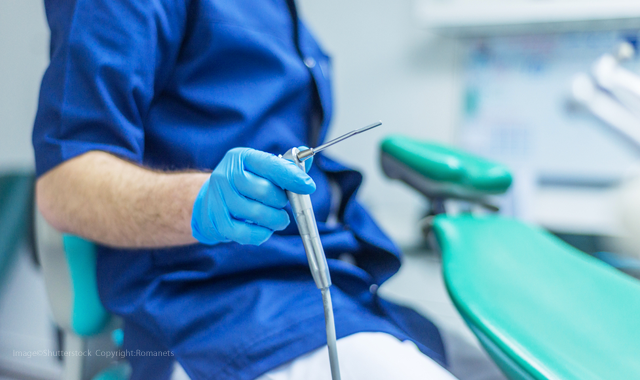The 5 most common infection control breaches
These mistakes are made all too often, and could be putting you, your staff and your patients at harm.

Infection control breaches come in all shapes and sizes – some are subtle and might not be readily apparent, while others are glaringly obvious. Some of the most common breaches are also some of the easiest to avoid.
Being aware of these common problems can save you, your staff and your patients from harm.
Hand hygiene
In 1847, Dr. Ignaz Philipp Semmelweis demonstrated the importance of handwashing to infection control. Surprisingly, nearly 171 years later, one of the biggest sources of infection control breaches still remains improper hand hygiene.
“We know that hand hygiene is the number one way to prevent the spread of infection,” Joyce Moore, RDH, an infection control consultant and clinical instructor at Bristol Community College in Fall River, Mass. says. “Despite having policies in place to prevent infection, a study was done by APIC showing that staff at outpatient care facilities failed to follow recommendations for hand hygiene 37 percent of the time. That’s astounding, because it is such an easy thing to do. Most facilities don’t have an issue with having handwashing areas.”
Trending article: 7 ways poor infection control can endanger your practice

Moore says that the main culprits to proper hand hygiene are time and comfort.
“I think people are just moving really quickly through their day,” she says. “You might have a doctor going from exam room to exam room to check their hygiene patients and they’re gloving and ungloving. Studies have shown that people who work in healthcare can wash their hands up to 100 times a day. And I think a lot of times people think, ‘My hands are clean, because I have gloves on.’ But, we know gloves aren’t a substitute for handwashing.
“In the winter, of course, it can be difficult to comply if your hands are dried and cracking,” she continues. “Hand hygiene is paramount and taking care of your hands in a way that allows you to wash them without issues, whether it be drying and cracking, are things you need to manage.”
Related reading: 5 benefits of good infection control
If the product us disagreeable, talk to whoever is in charge of purchasing to find a suitable substitute.
“You have to be able to go to the person in charge at your office and say, ‘This is an issue and we need to have an alternative,’” she says. “In some practices, you might have the option of bringing your own product in. And that’s okay. Lotions are a good choice, but they need to be the right lotion. And what I mean by that, is some lotions will compromise the gloves, even after you’ve used it on your hands and you’ve glowed up.”
Next: The importance of handpiece sterilization...

Handpiece sterilization
Handpieces may not seem like items that can be sterilized, but they are, and not enough practices seem to be doing it.
“There’s a misconception that the actual handpiece that you might use for dental hygiene care does not need to be sterilized,” Moore says. “Often, they will just put a clean replacement angle on it that has a rubber cup.”
Trending article: 4 extreme measures taken in the name of infection control
But that’s not enough.
“Commonly, the response is, ‘If I take off the disposable prophy angle and I wipe it down and I put a barrier on it, I’m not cross contaminating,’” she continues. “But, there have been studies done that show that the bacteria can actually get down into the motor.”
While handpiece sterilization may seem difficult or inconvenient, the CDC does require it.

“The CDC’s Summary of Infection Prevention Practices in Dental Settings - Basic Expectations for Safe Care state that ‘Dental handpieces and associated attachments, including low-speed motors and reusable prophylaxis angles, should always be heat sterilized between patients and not high-level or surface disinfected,’” Karen Daw, an infection control consultant and former Clinic Health and Safety Director for the Ohio State University College of Dentistry says. “Yet, many offices are not following the recommended guidelines. In addition, the manufacturer provides validated reprocessing directions known as Instructions for Use (IFU). If an item is deemed critical (instruments used to penetrate soft tissue or bone) or semi-critical (instruments that come in contact with mucous membranes or non-intact skin), must be sterilized between patients. An office can void their warranty or worse, risk an infection control breach by not following nationally accepted standards for reprocessing of instruments.”
Depending on the size of and activity at an office, one can see how the cost of handpieces can become rather expensive.
“Of course, handpiece purchasing can be really cost prohibitive,” Moore says. “I worked in a practice where, for a long time, we had five different hygiene rooms. We can have five hygienists working at the same time with 8 to 10 patients a day, and you have to think about how many handpieces do you need to have to make sure that everyone has a sterile handpiece. And then, of course, if something goes out of service for repair, do you have enough to replacements?”
Trending article: 5 considerations for personal protective equipment
Sterilization is unique to each device and clinicians should always look at the IFU for proper maintenance and reprocessing instructions.
“You could have a handpiece that requires 10 processes in order to reprocess,” Moore observes. “And you might have a company that has 34 processes in order to reprocess it. So, you need to look at the instructions for use, because, from brand to brand, it can vary widely.”
Next: Why proper processing is critical...

Proper processing
It isn’t just handpieces that can fall victim to inadequate sterilization. Improper use of the sterilizer can be just as ineffective as not sterilizing instruments in the first place.

“Even if we follow the correct processes for cleaning, examination of instruments and then sterilization, we still need to be sure that those items are not being removed from the sterilizer until the packages are completely dry,” Moore says. “Wet packages can wick bacteria when they contact whatever is transferring them to storage. Sometimes it means needing another sterilizer in order to reprocess it appropriately.”
Trending article: 5 reasons you need an infection prevention coordinator
The culprit behind this practice isn’t much of a surprise – it is usually a lack of time.
“Oftentimes, you have an office that is very quick paced,” Moore says. “Drying time can often be as long as a half an hour, and I really believe that most people don’t realize that those packages can wick that bacteria by being touched. But they can. It’s a good reason that even if things are done under the best conditions, that you open your package in front of your patients.”
Next: Are your water lines safe?

Water lines
Out of sight, out of mind is, of course, a quaint aphorism, but it is the cause of another common infection control problem – dirty water lines.

“The CDC summary also addresses monitoring water that travels through dental units, whether public or attached to bottle,” Daw says. “The plastic tubing that carries water to the air/water syringe, ultrasonic and handpiece promotes bacterial growth by design. It’s mathematics: surface to volume ratio of the water and the tubing used to transport it.
Related reading: The challenges of waterline disinfection
"High bacterial growth can in turn lead to biofilm. Patients are at risk because the water is used directly in their oral cavity and employees are at risk because of the aerosols generated. The goal is to use water that meets drinking water standards, or no more than 500 cfu/mL of heterotrophic bacteria. Water bottles with sterile water are not enough because it still needs to travel through the dental unit lines. Waterlines need to be treated and then monitored to ensure they meet the standards. When performing a surgical procedure, only sterile water and a similar delivery process should be used.”
Next: How communication can help...

Open communications
Having open lines of communication between staff members can help ameliorate infection control problems, simply allowing the discussion. The ability to freely and openly discuss issues can help ferret out and neutralize them.

“A culture of safety exists when employees can share their safety in a blame-free and transparent environment,” Daw says. “Employees must feel like they are being heard by the practice. In the case of the whistleblower who went to OSHA and their local licensing board, I can’t help but wonder whether the office had an open-door policy with regards to safety.
Trending article: 6 scary consequences of not following good infection control practices
"Did they have a dedicated Infection Control or OSHA Coordinator who would listen to employee concerns? Are concerns being addressed in a timely fashion? Are all employers and employees trained in the proper delivery of safe and infection-free dental care? Asking these types of questions of the team acts as a litmus test as to whether this area could use some help. After all, if employees do not feel comfortable coming to the employer or designated person regarding a potential infection control breach, there will be others that are willing to listen, including OSHA, the local dental board, and in this case, the 6 o’clock news.”
Since 1847, when Dr. Semmelweis demonstrated the importance of hand hygiene, healthcare professionals were put on notice that infection control was vital. Whether the sources of infection control breaches are subtle or obvious, it is up to the practice to ensure the safety of their patients and staff.
Episode 31: Dentsply Sirona Implant Announcements
September 30th 2021DPR’s Editorial Director Noah Levine sat down with Gene Dorff, Dentsply Sirona’s group vice president of implants and Dr. Dan Butterman to review several big announcements the company made in the arena of implants during Dentsply Sirona World 2021 in Las Vegas.